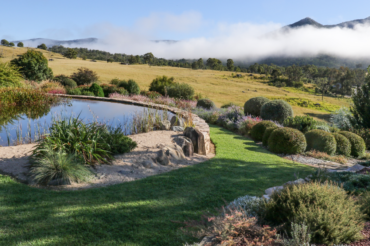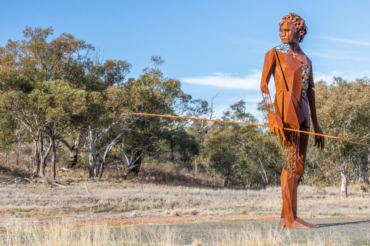
By all accounts, Father Anscar McPhee should be dead. In his very eventful 55-year career as a Benedictine monk, he’s been struck by lightning, swept away in flash floods twice, been in aircraft that looked like they were going to crash, survived a fall from a cliff without a broken bone and had more encounters with deadly snakes than most people could imagine.
On one occasion during his 30-year tenure as the parish priest at Kalumburu (formerly Drysdale River Mission) in the Kimberley region of Western Australia, Father Anscar woke to find a king brown snake wrapped around his feet; on another a big black came out from under his bed. Yet always he’s felt his Lord was looking after him, at times as reassuring as a “guiding hand on the shoulder”.
Born the youngest of 12 children on a farm in the Victorian Mallee, Father Anscar joined the Benedictine order as an 18-year-old in 1957. The self-confessed “immature lad” found his new life as part of the Benedictine Community of New Norcia, the official name of a group of Roman Catholic monks who have owned and operated the rural monastic outpost 132 kilometres north of Perth since 1847. Today, Abbot John Herbert is in charge of the community, which currently numbers 10 monks and priests, about 65 staff plus contractors, up to 25 visitors in the monastery guesthouse as well as anything up to 285 guests attending retreats, study intensives or school cultural excursions in the former convent and boarding school buildings that are dotted around the town. A chef in his former life, Abbot John is used to rigid discipline. Now he’s the one giving orders and many of them seem to be aimed at bringing this very traditional society into the 21st century. The monks live according to the Rule of St Benedict, which has been in existence since the sixth century and governs every aspect of Benedictine life, the hierarchy of the monastery, the balance of prayer and work and details concerning the food, drink and clothing of the monks.
In addition to the regular religious vows of poverty, chastity and obedience, the Rule requires the monks to promise stability to their community. In other words, a monk enters for life; if he doesn’t like the climate, the company or the work, transfer is not an option. As well he vows obedience to the abbot, which includes willingly doing whatever work he allocates and regarding it not as a career but as a job for the present time. If self-importance takes over the monk should be removed from his job.
The original story was published in Australian Country 15.6. Click here to subscribe to the magazine.
Click here for more escape stories.
Words Kirsty McKenzie
Photography Ken Brass
















